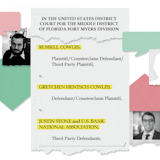Walter Bailey, the original owner of the Lorraine Motel in Memphis, left Room 306 vacant after Martin Luther King Jr. was killed on its balcony on April 4, 1968. Now preserved at the National Civil Rights Museum, the site of the social justice leader's final moments is both a beacon and a reminder. It speaks to its visitors, asking them to remember.
Near the vintage cars underneath the commemorative wreath that adorns the balcony where King lingered before an assassin's bullet struck him, I stood silently and reflected on my first trip there five years ago.
That spiritual experience is one I've had at George Floyd Square, too — particularly on a visit Friday morning just hours after city officials had commenced the predawn dismantling of a place that's become a refuge. It's appropriate and necessary to question Mayor Jacob Frey's commitment to opening the intersection while preserving the site and its symbolism as a "phased reconnection" unfolds because Thursday's act follows the playbook in a country that loves to move on when race is involved.
Per the Oklahoman, 83% of local respondents said they had not learned about the Tulsa Race Massacre — orchestrated by a white mob that killed up to 300 Black residents in 1921 — during their time in school. The system itself had erased the destruction of "Black Wall Street" and its victims.
"I have lived through the massacre every day," Viola Ford Fletcher, a Black Wall Street survivor, testified during a congressional hearing last month. "Our country may forget this history, but I cannot."
The changes at George Floyd Square also threaten to, over time, minimize the memory of his murder and the promises around systemic racism and poverty it generated. Minnesotans have historically placed the most violent displays of their racism in the attic, surprising their descendants when they uncover the veiled shame of their forefathers years later.
People of color, however, know the blood in Minnesota's soil is often buried, paved over or concealed at our expense.
The "Hanging Monument" marked the killing of 38 Native Americans in Mankato in 1862. While members of the local Indigenous community challenged its presence over concerns it celebrated the largest mass execution in American history, Mankato officials removed the monument in 1971 only because they were concerned about its impact on the city's reputation. In Duluth, white residents only whispered about the lynchings of three Black circus workers in 1920 until a movement led to the creation of the Clayton Jackson McGhie Memorial downtown in 2003. In the Twin Cities, you can drive east and west on Interstate 94 without ever seeing a prominent physical marking about the highway's destruction of the Rondo neighborhood in St. Paul. And how many people in this state know their homes sit on land swindled from Dakota or Ojibwe people?



